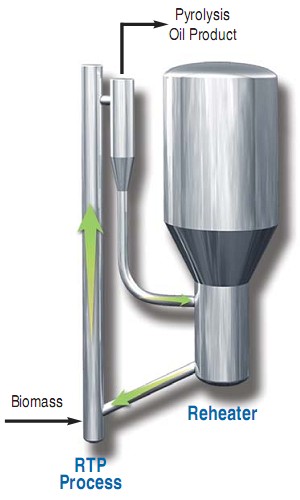Biomass Pyrolysis Chemical Pathways
Patrick Fahey and Vikram Seshadri are trying to elucidate the fundamental chemistry of biomass pyrolysis. They are focused on identifying the elementary reactions involved, trying to determine if the most important reactions take place in the solid phase, melt phase, gas phase, or all three. They are also trying to determine if these important reactions are free radical reactions, ionic reactions, pericyclic reactions, or all three.
Currently we are focused on how the cellulose polymer pyrolyzes. One method of analysis is to compare the pyrolysis behavior of glucose monomer, which is easier to simulate than the full polymer. Vikram Seshadri has identified several potential pathways for transforming glucose to levoglucosan, and is investigating why some transition states have a drastically higher energy.
Global models, such as the model in the following figure, are useful for predicting general product yields for pyrolysis. However, they do not explain any of the elementary chemical reactions, which may become vital for maximizing the more desirable bio-oil components. Knowing how to control specific reactions and specific products will allow better design of pyrolysis processes as well as better design of bio-oil upgrading catalysts.


